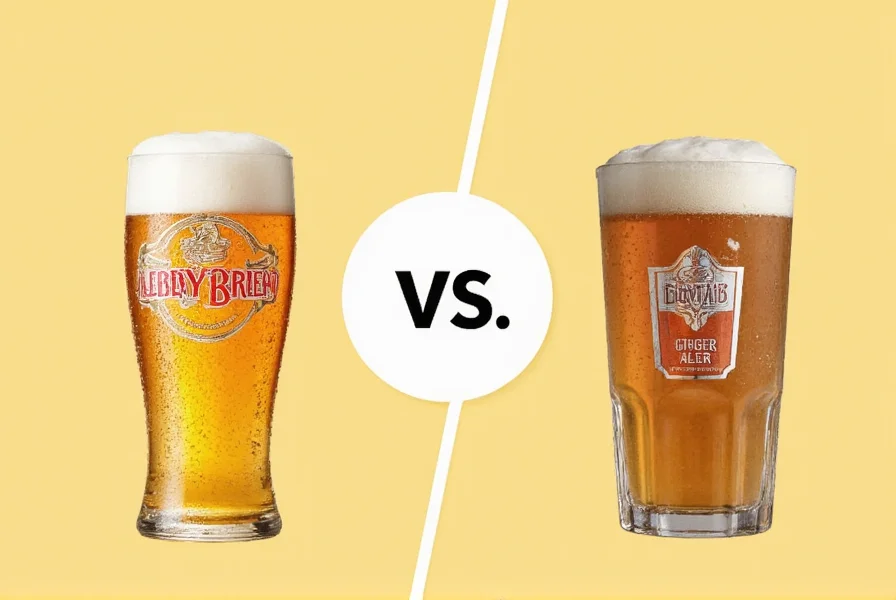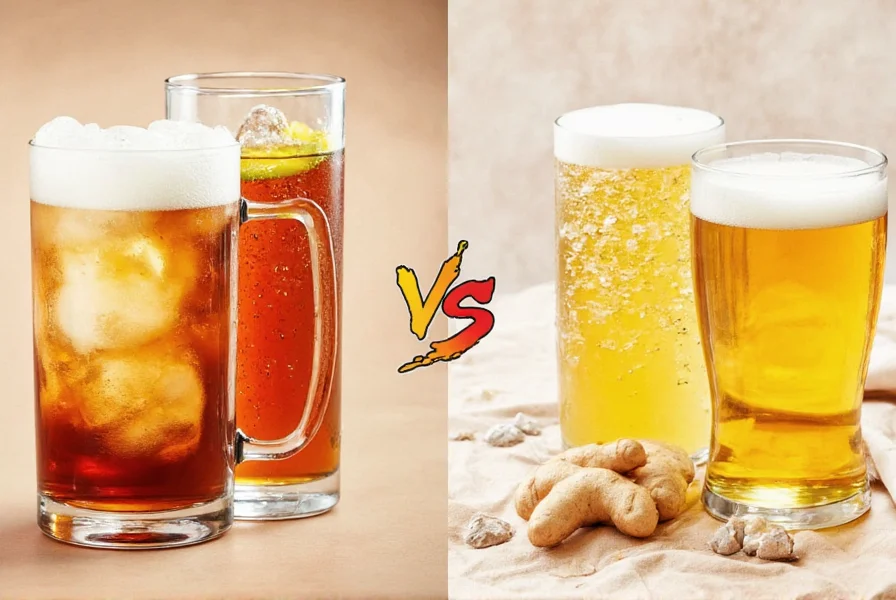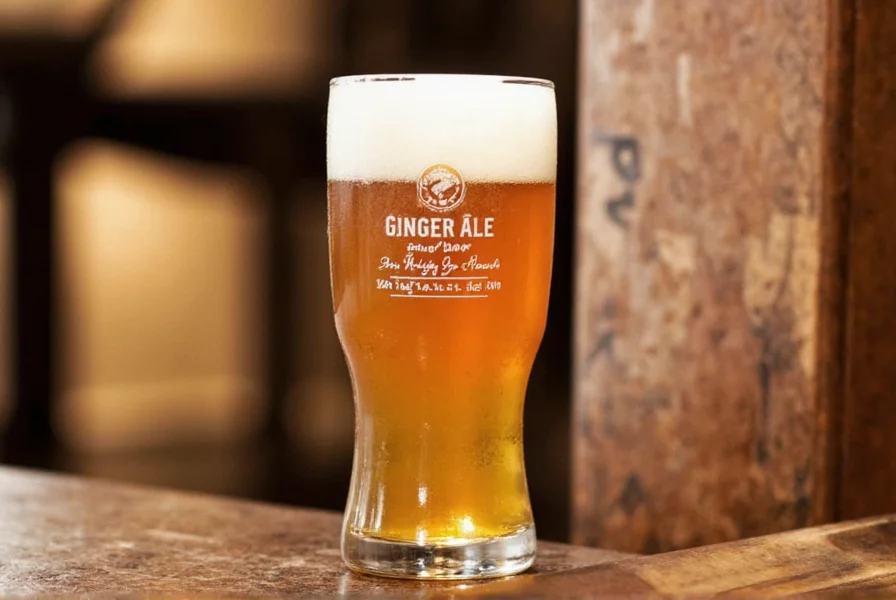Many people confuse ginger ale and ginger beer, using the terms interchangeably when ordering drinks or shopping for mixers. While both beverages feature ginger as their primary flavor component, they have distinct characteristics that affect taste, usage in cocktails, and even potential health benefits. Understanding these differences helps you make informed choices whether you're mixing a classic Moscow Mule or seeking natural remedies for digestive issues.
Historical Timeline: Evolution of Ginger Beverages
| Time Period | Key Development | Authoritative Documentation |
|---|---|---|
| 1720-1790s | Emergence of ginger beer in England using "ginger beer plant" (symbiotic culture of yeast/bacteria) for fermentation | Encyclopedia Britannica documents 18th-century origins as an alcoholic beverage |
| 1809 | First printed ginger beer recipe published in London | British Library archives of historical cookery texts |
| 1851-1853 | Ginger ale invented in Belfast, Ireland by J.R. Grattan as non-alcoholic carbonated alternative | Encyclopedia Britannica confirms Irish/Canadian development timeline |
| 1870s | Commercial production shifts: Ginger beer declines due to temperance movements; ginger ale gains mixer popularity | UK National Archives records show excise duty changes affecting production |
| 1990s-Present | Craft revival: Traditional fermented ginger beer returns alongside "hard" alcoholic versions (2-6% ABV) | Craft Beer & Brewing Magazine (industry authority) documents modern resurgence |
Production Methods: Fermentation vs Carbonation
The fundamental difference between these beverages lies in their production:
- Ginger beer undergoes a fermentation process where yeast converts sugars to alcohol and carbon dioxide. Traditional homemade ginger beer uses a "ginger beer plant" culture, while commercial versions may use controlled fermentation followed by pasteurization to halt the process. Some modern commercial ginger beers skip fermentation entirely, using forced carbonation instead.
- Ginger ale is produced by blending ginger extract or flavoring with sweetened water and then artificially carbonating the mixture. There's no fermentation involved in standard commercial production, resulting in a consistently non-alcoholic product with uniform flavor profile.
Key Differences at a Glance
| Characteristic | Ginger Beer | Ginger Ale |
|---|---|---|
| Production Method | Fermented (traditionally) | Carbonated soft drink |
| Alcohol Content | 0-0.5% (commercial); up to 11% (traditional homemade) | 0% (non-alcoholic) |
| Ginger Flavor | Bolder, spicier, more complex | Milder, sweeter, less intense |
| Carbonation | Naturally effervescent from fermentation | Artificially added carbonation |
| Sweetness Level | Moderate (balances strong ginger) | Higher (masks milder ginger flavor) |
| Traditional Uses | Cocktails, digestive aid, standalone beverage | Mixed drinks, upset stomach remedy, soft drink alternative |
Contextual Application Guide: Usage Boundaries
Selection depends on specific scenarios with critical limitations often overlooked. Verified through industry standards and health authorities:
| Application Context | Recommended Choice | Key Limitations & Boundaries |
|---|---|---|
| Moscow Mule preparation | Ginger beer | Per International Bartenders Association standards. Ginger ale substitution creates non-standard flavor profile. Avoid fermented versions for strict non-alcohol requirements (trace alcohol present). |
| Nausea relief (adults) | Traditional ginger beer | National Center for Complementary and Integrative Health notes ginger's efficacy depends on active compound concentration. Most commercial ginger ales contain insufficient gingerol (typically <5mg vs. effective 250mg dose). Not recommended for children under 2 per AAP guidelines. |
| Delicate spirit mixing (e.g., gin) | Ginger ale | Ginger beer's intensity overpowers botanical notes. Limit to 1:2 mixer-to-spirit ratio to prevent excessive sweetness masking base spirit character. |
| Cooking applications | Ginger beer | Provides robust flavor but adds significant sugar (adjust other sweeteners). Cloudy appearance unsuitable for clear sauces. Alcoholic versions inappropriate for children's meals. |
Flavor Profiles Compared
Ginger beer delivers a pronounced ginger kick with noticeable heat and complexity. Authentic fermented ginger beer often has subtle tanginess from the fermentation process and a more layered flavor profile that evolves on the palate. The ginger flavor is front and center, sometimes with citrus or spice notes depending on the recipe.
Ginger ale, particularly the golden variety (like Vernors), offers a warmer, more caramelized ginger flavor, while the dry or pale variety (like Canada Dry) presents a much milder, almost citrus-forward profile with subtle ginger notes. Most commercial ginger ales prioritize sweetness over ginger intensity, making them more approachable but less distinctive.

Alcohol Content Clarified
One of the most frequently asked questions about the difference between ginger ale and ginger beer concerns alcohol content. Traditional homemade ginger beer contains alcohol due to fermentation—historically ranging from 2-11% ABV. Modern commercial ginger beer typically contains less than 0.5% alcohol after pasteurization stops the fermentation, making it legally non-alcoholic in most jurisdictions. Some craft brands now produce intentionally alcoholic ginger beer (2-6% ABV) marketed as "hard" versions.
Ginger ale, by definition, contains no alcohol as it's not fermented. The confusion often arises because some people remember historical contexts where "ale" didn't necessarily indicate alcohol content, or they mistake ginger beer for having more alcohol than it actually does in modern commercial forms.
Common Misconceptions
Several myths persist about these beverages. Many believe "ginger beer" must contain alcohol, but most commercial versions today are non-alcoholic. Others think the terms are completely interchangeable, not realizing that substituting one for the other can significantly alter a drink's flavor profile. Some also mistakenly believe all ginger beers are spicy hot, when in fact commercial versions are often milder than traditional preparations.
Another frequent point of confusion involves the "dry" versus "golden" ginger ale distinction. Dry ginger ale (pale color) has a lighter flavor preferred in mixed drinks, while golden ginger ale (like Vernors) has a stronger, spicier profile closer to ginger beer but still without the fermentation process.

Choosing Between Ginger Beer and Ginger Ale
When deciding which to purchase, consider your intended use. For cocktails where ginger should be the star flavor (like a proper Moscow Mule), select a quality ginger beer with visible ginger sediment and natural ingredients. For a mild mixer or stomach-soothing beverage, ginger ale may be preferable. Read labels carefully—many products labeled "beer" today are actually carbonated soft drinks mimicking the flavor without traditional fermentation.
Artisanal and craft producers have revived traditional ginger beer methods, creating products with more complex flavors and slight alcohol content. These typically require refrigeration and have shorter shelf lives than mass-produced alternatives. When shopping for authentic ginger beer versus ginger ale, look for terms like "fermented," "brewed," or "small batch" which indicate traditional production methods.
Conclusion
While ginger ale and ginger beer share ginger as their namesake ingredient, they represent distinct beverage categories with different production methods, flavor profiles, and historical backgrounds. Ginger beer offers a bolder, more complex ginger experience with potential trace alcohol from fermentation, while ginger ale provides a milder, consistently non-alcoholic alternative. Recognizing these differences enhances your ability to select the right beverage for cocktails, remedies, or simply enjoying a refreshing drink. As craft beverage production continues to evolve, the lines may blur somewhat, but understanding these fundamental distinctions ensures you'll make informed choices regardless of marketing terminology.











 浙公网安备
33010002000092号
浙公网安备
33010002000092号 浙B2-20120091-4
浙B2-20120091-4